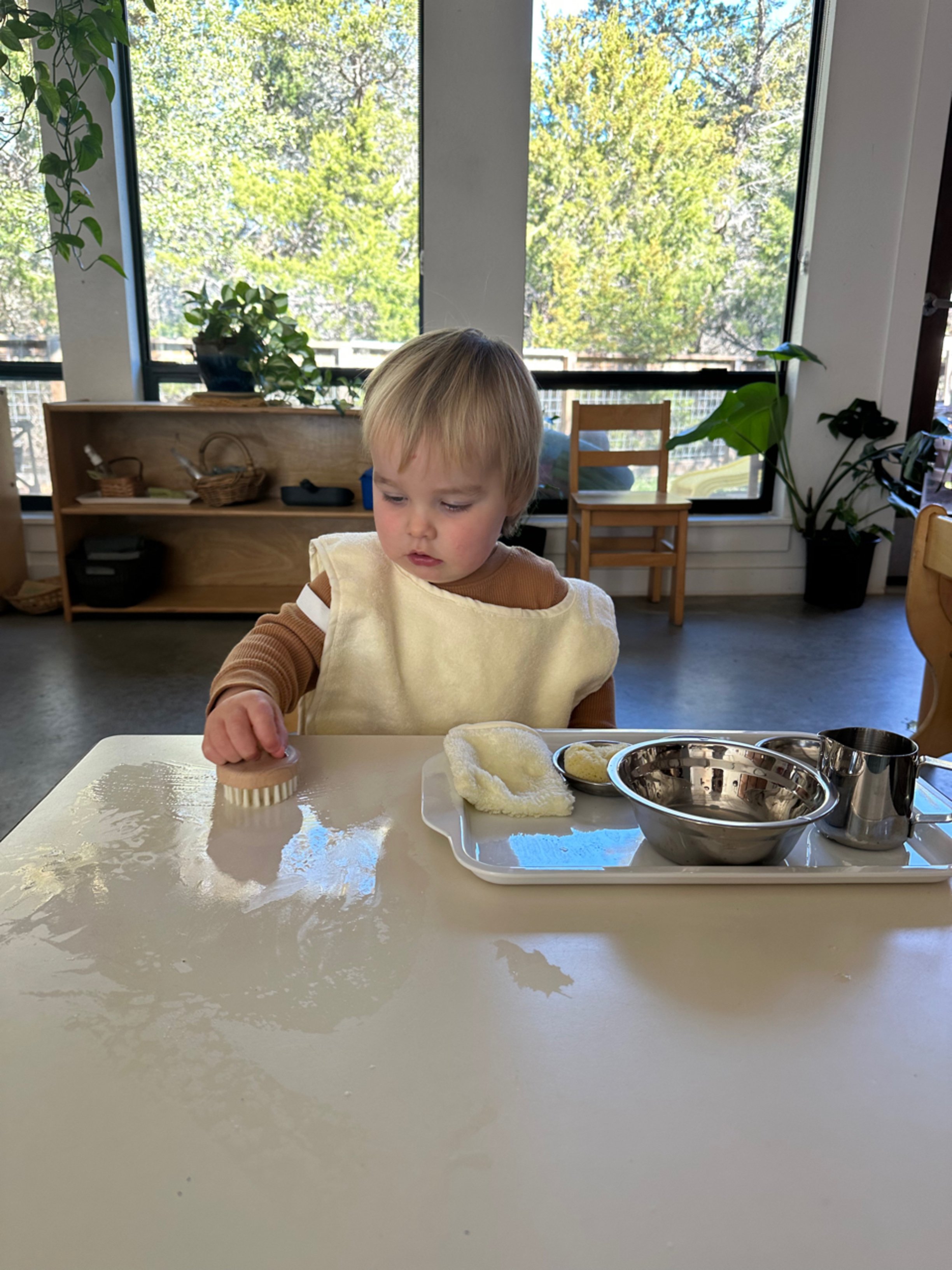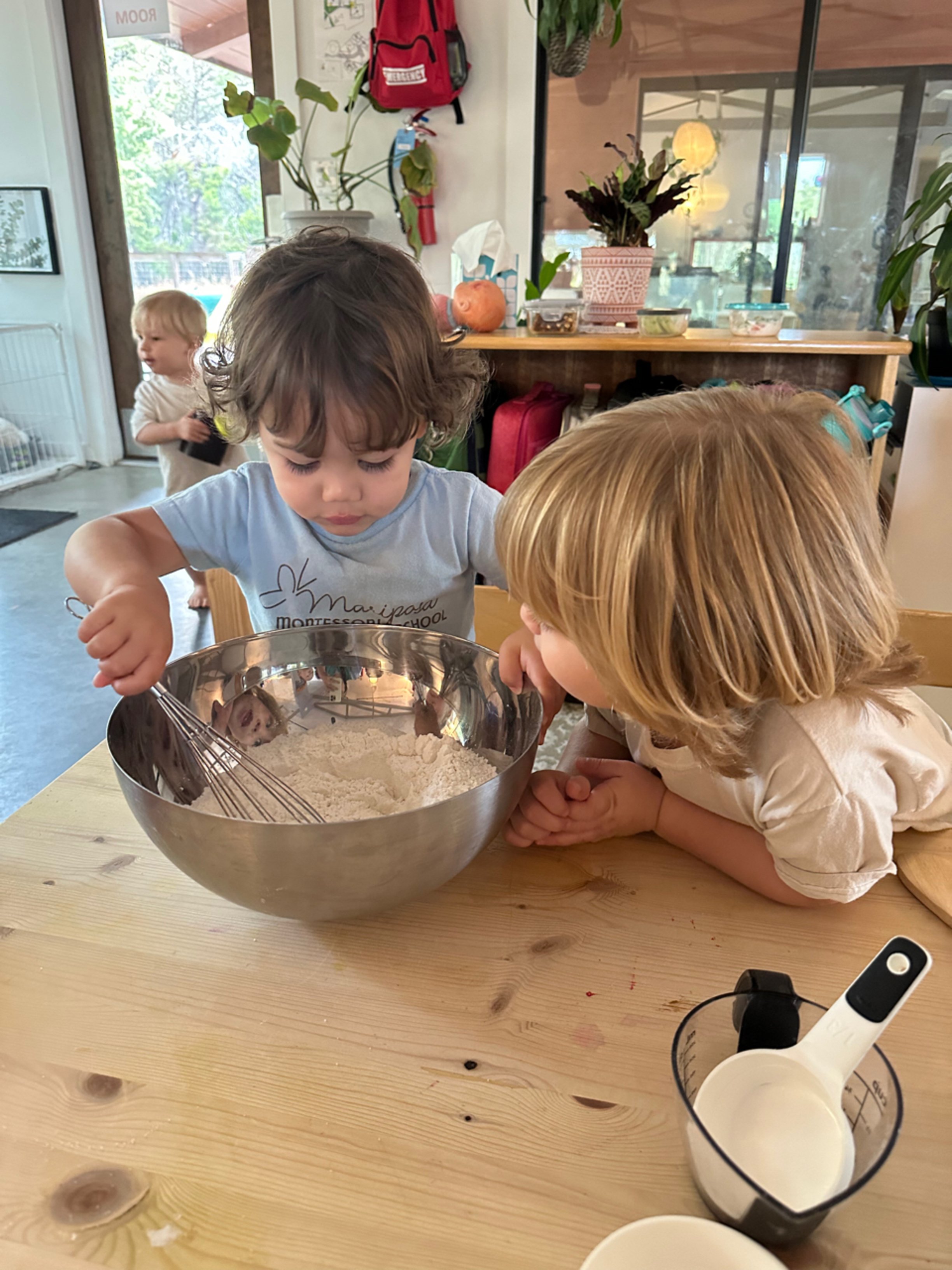YOUNG CHILDREN’S COMMUNITY
Each of our Young Children’s Community environments consists of one Montessori certified lead guide and at least one support guide with a maximum of 16 children ages 18 months to 3 years. The Young Children’s Community is carefully prepared to aid the toddler in achieving independence and reaching their full potential. The materials are chosen for their ability to enhance particular skills based on movement, language, and order. The child is free to move about the environment at will.
Maria Montessori outlined the importance of focused attention and the unobstructed use of the hand in the development of the mind. The freedom experienced in this carefully prepared environment gives the children the opportunity to discover and follow their own interests, and to become inspired by all they touch and see. Children in this age group have a strong drive and desire to do what they see adults do. This setting provides them not only with the opportunity to do adult work (preparing food, washing dishes, caring for plants, etc.) but also provides them with the appropriate tools to accomplish these tasks.
The sense of pride children feel in learning to care for themselves and their environment is a true thing of beauty. Hearing a child proclaim, "I did it!" is one of the best feelings a Montessori guide or parent can ever experience.
Benchmarks for our Toddler Program
Benchmarks are a series of skills a student will acquire over the course of their time in a program. We have established these benchmarks to communicate the work that is done in our classrooms. Everyone has their own internal timeline for development and learning. It is normal for children to learn in spurts and have periods of time where the acquisition of certain skills takes precedence over others. Mastery of these benchmarks will vary by individual. Many concepts are introduced without the expectation that they will be fully mastered by the time a student transitions to the next program.
Care of Self
Self-feeding: use of utensils
Toileting
Dressing: Velcro, zippers, buttons
Putting on shoes (Velcro slip-ons)
Wiping one’s nose
Putting clothes away
Care of the Environment
Setting the table
Cleaning skills: sweeping, scrubbing, dusting, mopping, squeegee, washing dishes
Handling work
Putting work away
Watering plants
Arranging flowers
Helping with laundry
Hammering and shoveling
Food preparation and service
Pet care
Psychosensory
Gross Motor
Running, jumping, dancing
Climbing, sliding
Pushing, pulling, lifting, hauling
Balance beam
Ride-on vehicles
Swings
Fine Motor
Continued work on palmar and pincer grasp
Stringing beads
Working with locks and latches
Using tongs and eye droppers
Drawing and painting
Pouring and spooning
Pasting
Ring and dowel sets
Imbucare boxes
Sensory
Sound shakers
Simple musical instruments
Work with clay and play dough
Sandbox
Texture exploration
Water blocks
Language
Mystery bag
Expressing needs and feelings
Use of ASL
Interactive reading
Nomenclature cards and objects
Puzzles
Songs in action
Classified objects
Math
One-to-one correspondence
Color sorting
Patterns, relationships, differences
Basic counting (1-5)
Cultural
Exploring simple instruments
Outdoor exploration
Diversity and inclusion through classroom representation
Art history and learning through classroom representation
Identifying feelings
Cultural celebrations



